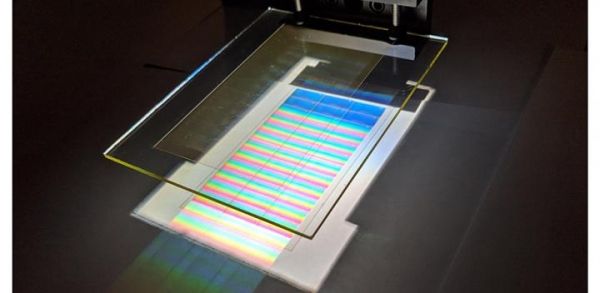The energy available from sunlight is 10,000 times more than what is needed to supply the world's energy demands. Sunlight has two main properties that are useful in the design of renewable energy systems. The first is the amount power falling on a fixed area, like the ground or a person's roof. This quantity varies with the time of day and the season. The second property is the colors or spectrum of the sunlight.
One way to capture solar energy is to use solar cells that directly turn sunlight into electricity. In a solar module like those that people place on their roof, many cells are assembled on a rigid panel, connected to one another, sealed, and covered with protective glass. The solar cell works best when certain colors of sunlight fall on it, and when the whole area is covered by photocells. However, some panel area is needed to connect the cells, and the solar cell shape may not allow all of the remaining panel area to collect sunlight. These effects make the solar panel less efficient than it could be. Capturing as much of the sunlight on a solar panel as possible is critical to efficiently harnessing solar energy.
Researchers at the University of Arizona recently developed an innovative technique to capture the unused solar energy that illuminates a solar panel. As reported in the Journal of Photonics for Energy (JPE), they created special holograms that can be easily inserted into the solar panel package. Each hologram separates the colors of sunlight and directs them to the solar cells within the solar panel. This method can increase the amount of solar energy converted by the solar panel over the course of a year by about five percent. This will reduce both the cost and the number of solar panels needed to power a home, a city, or a country.
Read more at SPIE--International Society for Optics and Photonics
Image: A holographic light collector separates the colors of sunlight and directs them to the solar cells. (Credit: R.K. Kostuk, University of Arizona)


